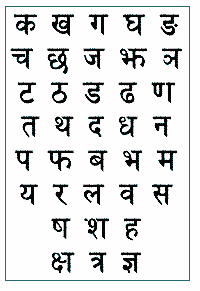History Of Nepali Language and its importance

Dirgha Raj Prasai
Since the creation of greater Nepal, the Nepali language has been popular as an easy means of communication between all language speakers of the nation. Many years before the creation of greater Nepal, the Nepali language had been in use from Bhramhaputra in the east and Kashmir in the west. The linguists have taken the stone inscription of Adityabanshi king Damupal, dating back to 1038 BS, as the official source of Nepali language. A copperplate inscription dating back to 1280 BS is the historical evidence of Krachalya King’s victory over Kedar-land Gadawal to create Sija’s Rigime. After studying the gold inscription of Prithvi Malla of 1413 B.S, we can surmise that the Nepali language came into existence in Gorkha and Gadawal since then.
Linguist Balkrishna Pokharel has written that the Nepali language used in Kirat era until 1382 BS is indicated by Simrangaud king Harisingh Dev’s Pandit Jyotirishwor’s Maithiti book ‘Barnaratnakar.’ Similarly, Bhanubhakta Pokharel writes, "Five-seven hundred years prior to the unification of Nepal, the kings and rulers of the nations in this region relied on Nepali language for inter-state use as in sending letters, treaties and agreements. Prithvi Narayan Shah, during his unification campaign spanning Baise, Chaubise, Limbuwan, Khumbuwan including Apungi breakaway states, used Nepali language whenever he had to speak with the monarchs of these states." In this fashion, the Nepali language gained a status as the inter-caste medium of communication.
There are plenty of archives to indicate that Prithvi Narayan Shah, before unification of Nepal, had used Nepali language when speaking with Kantipur’s king Laxminarsingh Malla and his son Pratap Malla. There are many evidences that kings Jagat Prakash Malla, Bhupatendra Malla, Bhaskar Malla, Pratap Malla and Jayaprakash Malla used Nepali language in their correspondence. As Nepali language was already in use among the smaller states before the creation of greater Nepal, it helped Prithvi Narayan Shah in his unification campaign.
Historian Nayaraj Panta has mentioned many evidences to indicate that Nepali language was used in correspondence during the Malla era, many years before the unification campaign got underway. Panta writes, "There is a stone inscription in Bishwonath Temple erected by Bhim Malla in front of Kalbhairav at Hanumandhoka." The stone inscription dating back to Nepal Sambat (Newari calendar year) 761 during the time of Laxminarsingh Malla located at a Dabali at the side of Kathmandu’s big Gantaghar and Makhan Shivalaya is written in Nepali language. There is a stone inscription in Nepali language that Pratap Malla created at Rani Pokhari in Nepal Sambat 790. The red seal written in Nepali language by Jagat Prakash Malla in 1585 Sakh S. and Jaya Prakash Mall’s document signed in the name of God as a witness to Prithvi Narayan Shah in 3 Poush 1814 BS mentions, "Kathmandu will not ambush the materials brought from Gorkha, receive the goldsmith coming from Bhot, take the coins brought from Madhes, give Naldum to Kathmandu and do the work of Kathmandu."
Historian Shankarman Rajbhanshi writes, "The Syahamohar (authority writing) written in Poush of 1719 BS by Morang king Harishchandra Sen and Brish Sen were the papers written in Nepali language.
Makawanpur’s king Manik Sen wrote Syahamor in Nepali language to Shri Gosai and papers written under the title Kartik, 1984 BS and there are papers written in Nepali language by Budhikarna Raya in 1824 BS from Bijayapur. Nepali, Hindi, Maithili, Bhojpuri, Bangali, Gadawali languages are the children of Sanskrit language. The Sanskrit language had occupied the position of national language throughout the Licchavi rule in Nepal. (Puratatwa Sangraha 2018). During the Malla rule, Sanskrit, Nepali and Newari language including local languages were used. Before the unification of Nepal, those travelling to Gorkha, Lamjung, Kaski and Janakpur from Kathmandu spoke in Nepali language. In this way, Nepali language came into practice from Bramhaputra to Kashmir. The fact is that Nepali language is not the language enforced by the victorious rulers like kings Prithvi Narayan Shah and Mahendra.
Darjeeling’s intellectual scholar Parasmani Pradhan had said, "Nepali language is not a language belonging only to a certain caste and creed. Not only the Bhramin, Chetri castes but Gurung, Magar, Rai, Limbu, Newar, Tamang have embraced Nepali language as their language despite having their own separate mother tongues. This has created a huge Nepali caste. There is no such thing as that one should forget the person’s caste language. If some castes are trying to struggle with the concept that Nepali language is not their language, they will not allow themselves to stand firm nor will allow others to do so. The Khas sound changed into Khas language and became the language of Gorkha and Gorkhali and now it is the language of all Nepalese people. The Nepali language is accepted by the Nepalese in India’s Assam, Manipur, Darjeeling, Deharadun of Uttaranchal and Almoda. The Indian government has given an international recognition to the Nepali language treating it as that of the government language.
Nepal is home to various castes, languages and people. There are a total of 124 different languages spoken in the nation. Among them, 40/50 languages are in developed state. Maithili, Bhojpuri, Awadhi, Magar, Gurung, Tamang, Sherpa, Newar, Tharu, Rajbanshi, Limbu, Rai, Thakali, Sunuwar, Satar, Urdu are popular in their own communities. The Hindi language is also spoken at some places due to the open border. However, the influence of the Hindi language as compared to what the local mother tongues have is none. Hindi is the national language of India. To adopt Indian national language is tantamount to accepting Indian dominance, which the Nepalese people are against. Since 2006, our thinking after independence has been increasingly influenced by the antinationalist elements and foreigners. This is not good for the Nepalese people.
Nepal is very rich in terms of language. This does not mean that every local language should be turned into an official language. If attempts are made in this direction, it may create difficulties in many aspects. A Newar scholar Ashok Shrestha writes, "It is nothing more than intellectual folly to launch agitation supporting the concept of Baise and Chaubise states (22 and 24 states). Kathmandu is the capital; it is natural that multi-castes of people from diverse geographical areas stretching from Mechi in the east to Mahakali are gathered here. There is a hidden mentality to make these people that cannot speak Newari cross Thankot." Thus, people speaking different language need to sacrifice on account of nationality. Following the unification of Nepal, all the castes and creeds of the nation have merged into a single caste of being Nepali in the mainstream of greater Nepal. In 2008, at the oath taking ceremony of the Constituent Assembly (CA) members, they took oath in fifty different languages and made fun of national unity.
The first Vice President of Republic Nepal Parmananda Jha, who has three decade’s experience as a justice, disregarded the national attire and took oath in Hindi language, an act which was against the constitution. The Maoist chairman Pushpa Kamal Dahal ‘Prachanda’ appeared in suit and tie to take the oath of office as the Prime Minister. How shameful is it? This effort to disdain Nepalese identity was a big defect. The national attire that reflects the Nepalese identity is Daura-Suruwal and Dhaka Topi. There were no debates raised on the subject of this national attire even after the restoration of democracy in the nation. The Nepalese language is recognized as the national language since the unification. The Nepalese kings, Nepali Congress leader BP Koirala, Matrika Prasad Koirala, Tanka Prasad Acharya, K I Singh, all the leaders, including the communist leaders and poets, have never disgraced the national attire.
Newars are nationalists. However, on purpose or inadvertently, the debate on language was started from Newars of Kathmandu. Newars are taken aback as the communal harmony existing in the nation is rickety. Newars have a huge contribution in creating awareness of Hindu and Budhist religions in Nepal. The local mother tongues can be used to save national assets through literary writings, dramas, cinemas, dance and songs. The government has made arrangement for lessons in Newari, Maithili and other languages in schools.
In such a context where the globe is becoming a village, it would not be appropriate to get entangled in a dispute of whether the local language should be given space as official language of correspondence. For example, at Dhapkharka of Bhojpur, a Sherpa school was set up a few years ago with the intention of developing the mother tongue. Although NGOs worked ardently and the students flocked the school for some days, it closed down afterwards. The desire to learn Newari language in TU is depleting. The Newari-language department in Tri-Chandra Campus is empty. Some schools are offering courses in Limbu, Gurung, Magar, Tamang and Urdu languages. If these languages had a prospect in the international arena, it could have been taken as a positive step. If forceful attempts are made to transform the local ethnic languages into official language of correspondence, it will result in ethnic conflict, which, in turn, may harm national unity. The Nepalese scattered here and in other nations should be alert to prevent such a situation.
source: Prasai,Dirgha Raj(2011),"History Of Nepali Language And Its Importance ", 27 Feb 2011, Rising Nepal
Posted on: 2011-08-12





























